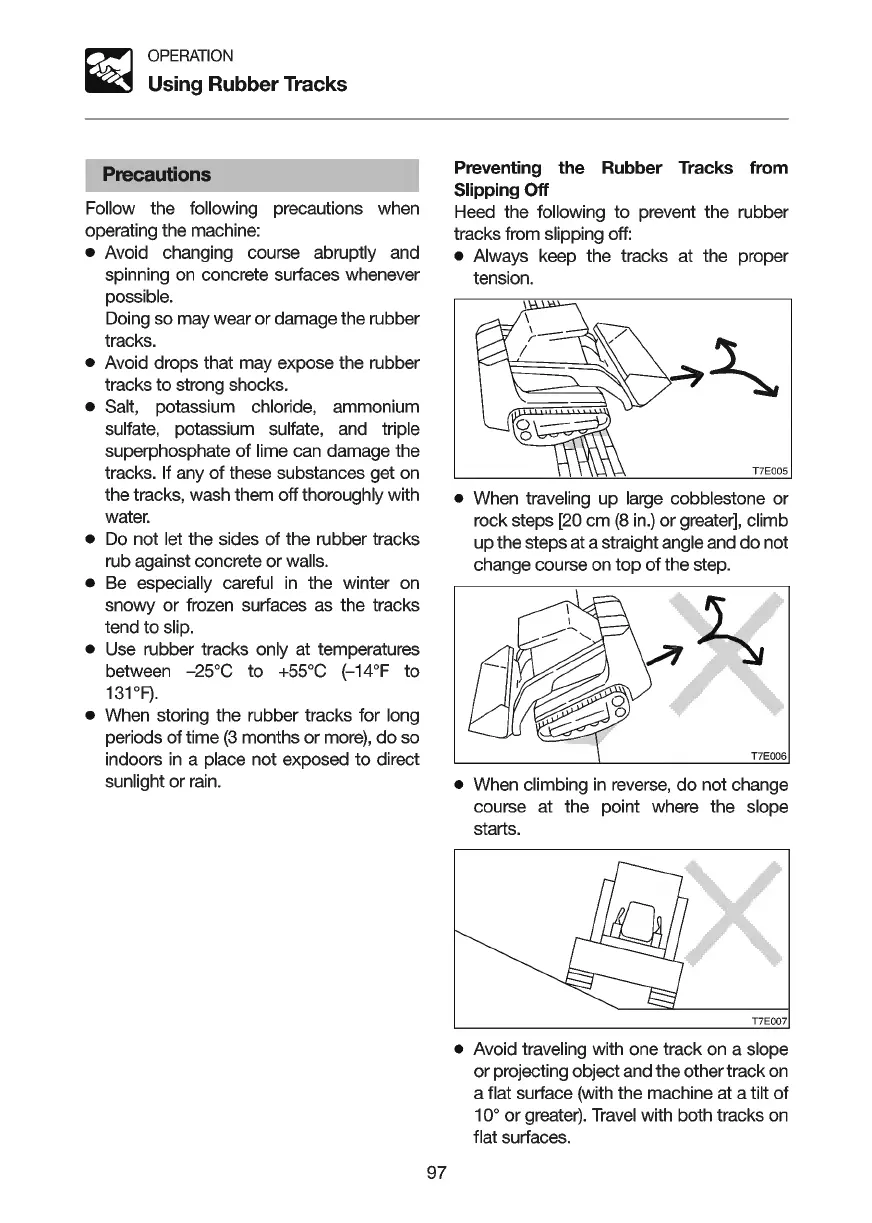OPERATION
Using Rubber Tracks
Precautions
Follow the following precautions when
operating the machine:
• Avoid changing course abruptly
and
spinning
on
concrete surfaces whenever
possible.
Doing so may wear or damage the rubber
tracks.
• Avoid drops that may expose the rubber
tracks to strong shocks.
•
Salt,
potassium chloride, ammonium
sulfate, potassium sulfate, and triple
superphosphate of lime can damage the
tracks. If any of these substances get
on
the tracks, wash them off thoroughly with
water.
•
Do
not let the sides of the rubber tracks
rub against concrete or walls.
•
Be
especially careful
in
the winter
on
snowy or frozen surfaces
as
the tracks
tend to slip.
•
Use
rubber tracks only
at
temperatures
between
-25
°C to +55°C (-14°F to
131
°
F).
• When storing the rubber tracks for long
periods of time
(3
months or
more),
do
so
indoors
in
a place not exposed to direct
sunlight or
rain.
97
Preventing the Rubber Tracks from
Slipping
Off
Heed
the following to prevent the rubber
tracks from slipping off:
• Always keep the tracks at the proper
tension.
• When traveling up
large
cobblestone or
rock steps
[20
cm
(8
in.)
or greater], climb
up the steps
at
a straight angle and
do
not
change course
on
top of the step.
• When climbing
in
reverse,
do not change
course at the point where the slope
starts.
T7E007
• Avoid traveling with one track
on
a slope
or projecting object
and
the other track
on
a flat surface (with the machine
at
a tilt of
10° or greater).
Travel
with both tracks
on
flat surfaces.

